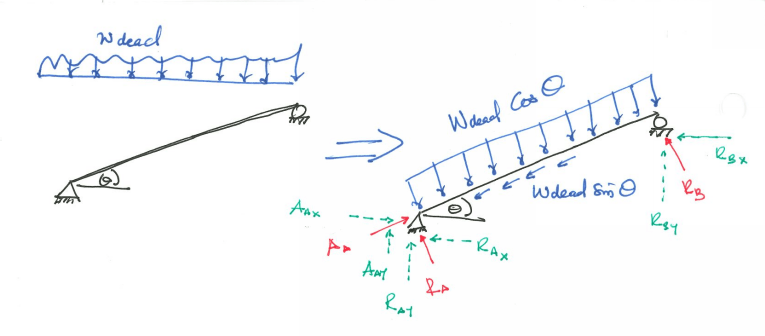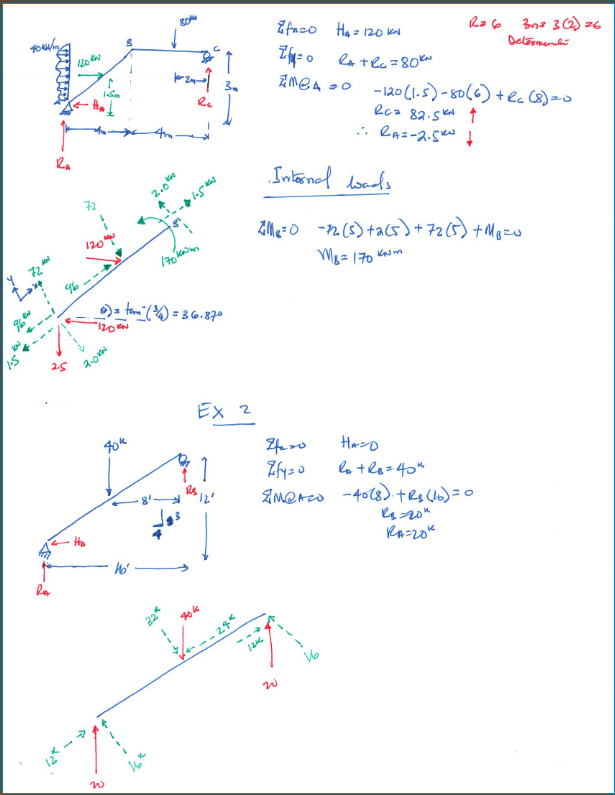BulbTheBuilder
Structural
I am designing this inclined mechanical equipment on supports. I did my analysis by hand and inputted the loads manually in a STAAD model. Attached it a simple illustration to show my reactions (loads) on the supports. As you can see, there are shears introduced into the supports.

However, there's this discussion that there shouldn't be any shear in the support.
A simple model was done in STAAD pro and there was no shear in the supports but I am highly confident in my analysis and think there's something wrong in the STAAD sample model (sample model done in my office to prove their point; not Bentley default models). My only problem is, I can't figure out what is wrong. My issue is, if they decide to model it and there's no shear then the model is wrong (in my opinion). How do you model such scenarios in STAAD pro? Personal, I want to go with using my computed reactions as my loads rather than putting loads on the inclined plane.
Can anyone shed some light on how they went by such situations? I want to view things from as many perspective as I can.
[Edit] - I have attached a sample STAAD model

However, there's this discussion that there shouldn't be any shear in the support.
A simple model was done in STAAD pro and there was no shear in the supports but I am highly confident in my analysis and think there's something wrong in the STAAD sample model (sample model done in my office to prove their point; not Bentley default models). My only problem is, I can't figure out what is wrong. My issue is, if they decide to model it and there's no shear then the model is wrong (in my opinion). How do you model such scenarios in STAAD pro? Personal, I want to go with using my computed reactions as my loads rather than putting loads on the inclined plane.
Can anyone shed some light on how they went by such situations? I want to view things from as many perspective as I can.
[Edit] - I have attached a sample STAAD model


